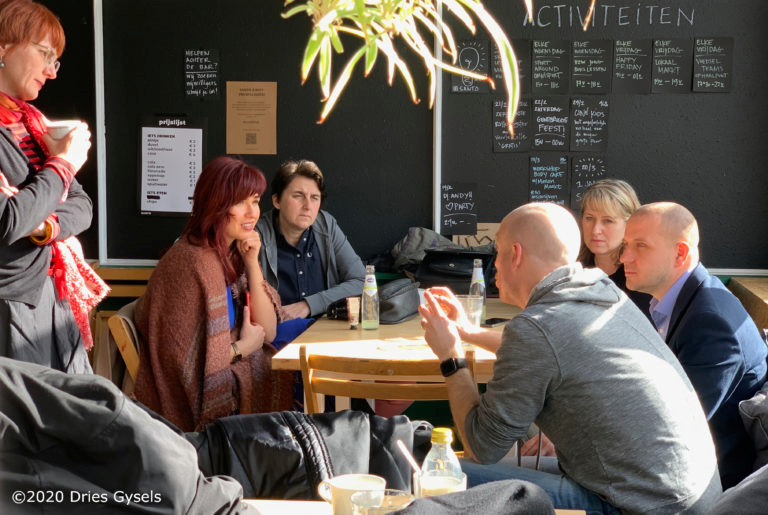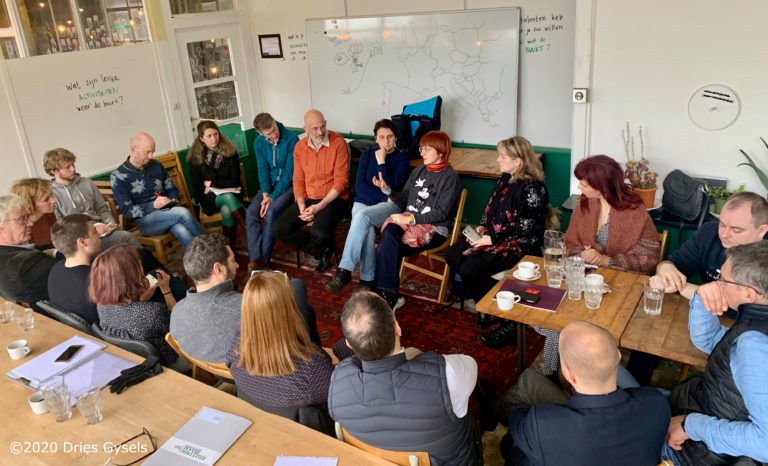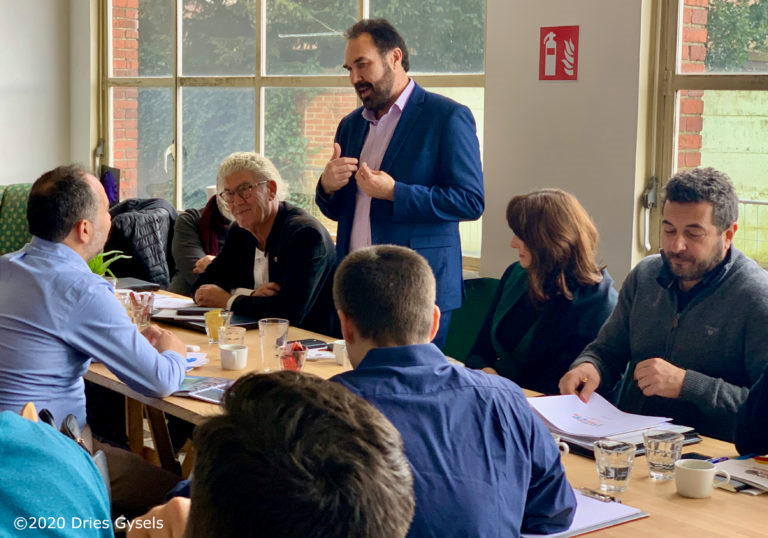Making the Street of Your Dream a Reality
In time of “social distancing”, discussions on how to adapt and improve local approaches to urban planning are more relevant than ever. The EUKI Living Street project will allow a group of cities from Croatia, Greece and Portugal to redefine the socio-economic and the aesthetic dimension of their streets within the urban development framework.

The project’s kick-off took place on February 26th and 27th. What better place to do it than in Ghent, the Belgian city where it all started? Dries Gysels and Pieter Deschamps, members of the Dutch organization Meneer De Leeuw, were there to tell us the story. We met them at SANTO, a former fire hall temporarily converted into a building where skaters, artists and groups of people who are interested in the exchange of ideas on sustainable development, can meet.
Further Information

In 2012, a group of citizens, entrepreneurs and civil servants from the city of Ghent came together to imagine a sustainable future for their city: a network of pedestrian areas developed around central squares, bicycle and public transport lanes, spaces where neighbours can interact in the street. Soon organized into a temporary NGO called “The Trojan Lab”, these actors applied their ideas into concrete experiments, the Living Streets.
Initially, the idea was to allow the city of Ghent to make new and greener choices in terms of urban planning and mobility with the support of local actors. They asked themselves what was the best way to come up with new solutions to the issues of the neighbourhood, together. “We have experienced the power of the question “What if …?”. This allows citizens to interact with each other, to have more discussions and to explore new ideas” said Pieter.
Lessons learnt from Ghent
The visitors, coming from different organisations in Croatia (Terra Hub), Portugal (Oeste Sustentavel) and Greece (Sustainable City Network) , had the chance to learn a lot about the initiative. Each living street in Ghent lasted between 2 and 4 months because beyond this timeframe, the project was too hard for the people to maintain. In addition, although many would have liked to make them permanent, urban planning regulations and street redesign agendas were not allowing it. In Ghent, only one Living Street has become permanent.
In order to finance such projects, Dries and Pieter suggested to start with sponsors and crowdfunding, as they can be consider also as feasibility indicators: “With these means of funding, it is easier to make local authorities understand that citizens are ready and willing to commit, than the ideas are good and convincing”. Indeed, up until 2017, the year in which the Trojan Lab ended its activities, no less than 50 Living Streets were created!

Ghent’s Living Streets pilot has now turned into a concrete project under the responsibility of the municipality. They allocated a budget to the participating streets and are collecting data concerning road safety that will be used for future editions.
Exporting the Living Street concept in Europe
Thanks to the EU funded project “Living Streets”, coordinated by Energy Cities between 2016 and 2018, other European cities could follow Ghent’s model. Vlatka Berlan presented the activities she helped set up for the Living Streets of Ivanić-Grad in Croatia. They created a pedestrian city centre and implemented actions supporting both the local economy, such as collaborating with local bakeries and wine producers, and the urban environment, by temporarily offering public land to the inhabitants and distributing urban gardening sets. Ivanić-Grad’s experience shows that such bottom-up approaches promoting citizen involvement give better results: the effects of the Livings Streets are still visible today
Reflections on future actions
The meeting in Ghent provided the participants to the EUKI Living Streets project with plenty of inspiration, but they also received some methodological insights on driving sustainable transition processes: thanks to initiatives such as Living Streets, cities can rise to the level of the transition required by today’s societal challenges.

The EUKI Living Streets partners are now ready to start creating their own living streets. The current crisis will demand new solutions and a certain degree of adaptability, to allow for meaningful social interactions. We are sure that the walks around Ghent’s pedestrian areas, the delicious local food and the exchange of ideas provided them with plenty of motivation!
